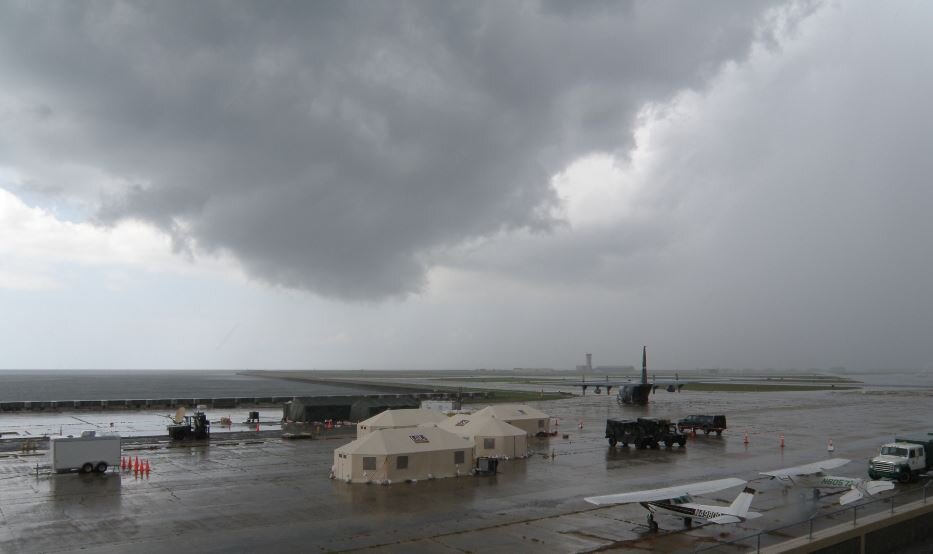At Western Shelter, we partner with response and recovery experts from across the globe to discuss how to better protect against and recover from devastating natural disasters. We have worked diligently across our company’s 30+ year history to develop and improve upon the products we make to serve responders with both common and tailored capabilities.
2022 NATURAL DISASTER EXPO, MIAMI
We had the privilege of attending the Natural Disasters Expo in Miami Beach, FL. We joined over 350 worldwide disaster response and recovery experts to discuss how to better align with agencies and businesses to protect against and recover from natural disasters across the globe. The Expo focused on storms (particularly hurricanes and tornados), earthquakes, heat & fire, and floods. From Western Shelter’s perspective, we support responders to these different disasters with both common and tailored capabilities to meet their needs.
Hospital Use of Shelters During Pandemics
Disasters, both natural and man-made can severely impact the areas where they occur. Their effects can manifest with little warning, surging beyond the capability of essential institutions to fulfill their missions in the face of spiking demand for resources and services. Creative solutions from strategically thinking leaders can be the difference between survival and extinction for organizations and individuals in these situations.
During the Coronavirus Disease 2019 (COVID-19), many hospitals saw a disproportionate amount of people seeking emergency care – especially in large cities. Little was known about the ad hoc processes needed to manage sudden and sustained influxes of infectious patients during a pandemic-level event. The Bronx was particularly overwhelmed, experiencing the highest hospitalization and mortality rates of the city’s five boroughs despite having the highest per capita number of hospital beds and the smallest number of elderly adults in NYC. In a paper published in the Western Journal of Emergency Medicine, July 2021, Doctor Joshua Moskovitz, MD, MBA, MPH, FACEP, Associate Director of Emergency Department Operations at New York’s Jacobi Medical Center, published a paper with a team of colleagues to capture the lessons learned from their perspective. Their article, “Impact of a Novel Emergency Department Forward Treatment Area during the New York City COVID-19 Surge” (https://escholarship.org/uc/item/0z38f2xt#main), discusses how they deployed two Western Shelter 1935 shelter systems as a Forward Treatment Area (FTA) immediately outside their ambulatory emergency room entrance, ultimately allowing them to discharge 80% of their patients without utilizing main emergency department (ED) resources.
The location, size, and function of the FTA provided several advantages for the hospital. ED leadership elected to set up the FTA within 15 feet of the ambulatory entrance to the emergency room and direct patients with COVID-19 symptoms to the FTA entrance instead of the building itself. Keeping the FTA near the emergency room, instead of using a distant-but-larger facility (such as the Javits Center) relieved the hospital of having to fully staff two facilities simultaneously. In fact, the hospital leveraged the low FTA manning requirements, keeping most ED personnel focused on critical-care patients. The nearness to the ED also meant that patients who needed emergent care could immediately transition to the main building as appropriate. Those patients that did not need emergency services were efficiently and safely discharged without having to enter the ED (79%). The FTA also provided a space where those patients with COVID symptoms (33%-50%) could be assessed without encumbering an entire room in the ED (policy for potentially infectious patients). This also reduced the exposure of non-COVID patients and hospital staff in the ED to patients with COVID symptoms. The smaller, mostly vinyl FTA also presented an easy area to sanitize after evaluating symptomatic patients.
The Western Shelter 1935 systems deployed to form the FTA used several additional sub-systems to ensure full functionality of the FTA. These included:
Insulated walls to better manage hot and cold weather
Generators for powering the facility and ensuring back-up power if municipal power failed
Wiring harnesses to distribute power for lighting, computers, and medical equipment
CL-ACXE1200 HVAC units for climate control
Additional options to add capability to an FTA in future scenarios include:
HVACs to create positive/negative pressure in the FTA
Patient privacy curtain systems to add up to 10 individual patient treatment areas in each 1935 shelter
Air scrubbers to filter the air
Divider walls to section off the shelters into specific zones
Shelving/Desks custom fit to shelter frame for equipping office space
In the end, the FTA established at the Jacobi Medical Center provided a model for other medical facilities to adapt and employ. Their forward treatment area proved an effective method to rapidly screen the increased volume of patients with a novel infectious pathogen in an urban environment with limited resources. This treatment area decreased the burden on the ED structure, was rapidly deployed, and effectively screened patients for a safe discharge home.
Contact our sales team for more information on our customizable shelter systems.
Hurricane Season is Here
June 1st marked the official start of hurricane season, and for many of our customers, this is one of the busiest times of the year. Colorado State University (CSU) and the National Oceanic and Atmospheric Administration (NOAA) both expect an above average level of hurricane activity, with CSU predicting 17 named storms and 4 major hurricanes this year—and it only takes one storm making landfall to have a devastating effect on those caught in its path. Officials from NOAA and the Federal Emergency Management Agency (FEMA) have urged those living in hurricane zones to prepare now, well before a storm comes. Here at Western Shelter, we are standing by to help emergency managers, first responders, and response and recovery organizations with their preparations, making sure they are ready before the peak of the upcoming storm season in August and September.
Those responding to hurricane-impacted areas use our shelters for a variety of reasons. Our Gatekeeper line of products have proven their durability and utility time and time again in this environment. Their light-weight modules transport readily to disaster scenes and a crew of four personnel can have our shelter set up in as little as 30 minutes (available in 286/570/840/1274 square foot sizes). If that is not fast enough, or if you have a short mission duration, our inflatable Sentinel series can be ready to go within six minutes of placing them at your desired location (available in 312/452/603/840 square foot sizes). Our new line of articulating frame shelters come in a variety of sizes for our users that prefer a shelter that sets up quickly for the team that needs to get to work immediately. Four people under the canopy can set these shelters up in less than 15 minutes. We offer a large variety of sizes to accommodate our customers (100/150/250/320/460/480/635/694/720 square feet). Finally, our adaptable Guardian line of shelters, with their barrel-shaped frame and large size (800/1,170 usable square feet) can easily be configured for dining, gymnasium, recreation, workshop, storage facilities and medical sites.
We remain cognizant on how challenging this operational environment can be. Rain, heat and humidity not only take their toll on equipment, but can pose a strain on your team’s mental health as well. Being able to separate yourself from the harsh climate to recharge can be a huge boost for personnel, and offers a space to remain cool under pressure. We offer a quality line of generators, HVAC units, and power distribution solutions to help keep your work environment comfortable. We have a plethora of options to suit your needs, whether its growing capabilities, a reliable back-up, or perhaps a replacement, we encourage you to be prepared and ensure that your current units are functional and ready-to-go. In addition, we offer shelter add-ons such as vestibules to connect large/inter-agency teams, tie-down options when stakes can’t be used, flooring for high/heavy traffic areas, storage for your equipment and shelters, as well as furnishings and field sanitation solutions.
Western Shelter is proud to provide a legacy of quality products to customers executing no-fail missions to support individuals and communities impacted by disasters, both large and small. While your team works to restore stability in the wake of a disaster, our shelters serve a multitude of uses such as alternate care sites for health care providers, house and feed volunteers and professionals, or command and control centers.
A few examples of our past projects have been serving in Louisiana after Hurricane Katrina, providing facilities for field hospitals and staging areas for Urban Search and Rescue (USAR) Teams, and operating locations for emergency managers. We were there after Hurricane Sandy, serving as an alternate care facility for a hospital flooded out of its location. We were in Puerto Rico after Hurricane Maria providing Veterans Affairs Health Clinics, DMAT Team Health Clinics, and staging areas for National Guardsmen, FEMA personnel, and USAR teams.
We know the threat that every hurricane season can potentially bring. We’re here to assist in your preparation to sustain your response team’s safety during critical missions. You cannot fail, and we will not fail you.
For more information, contact our Sales Team.











